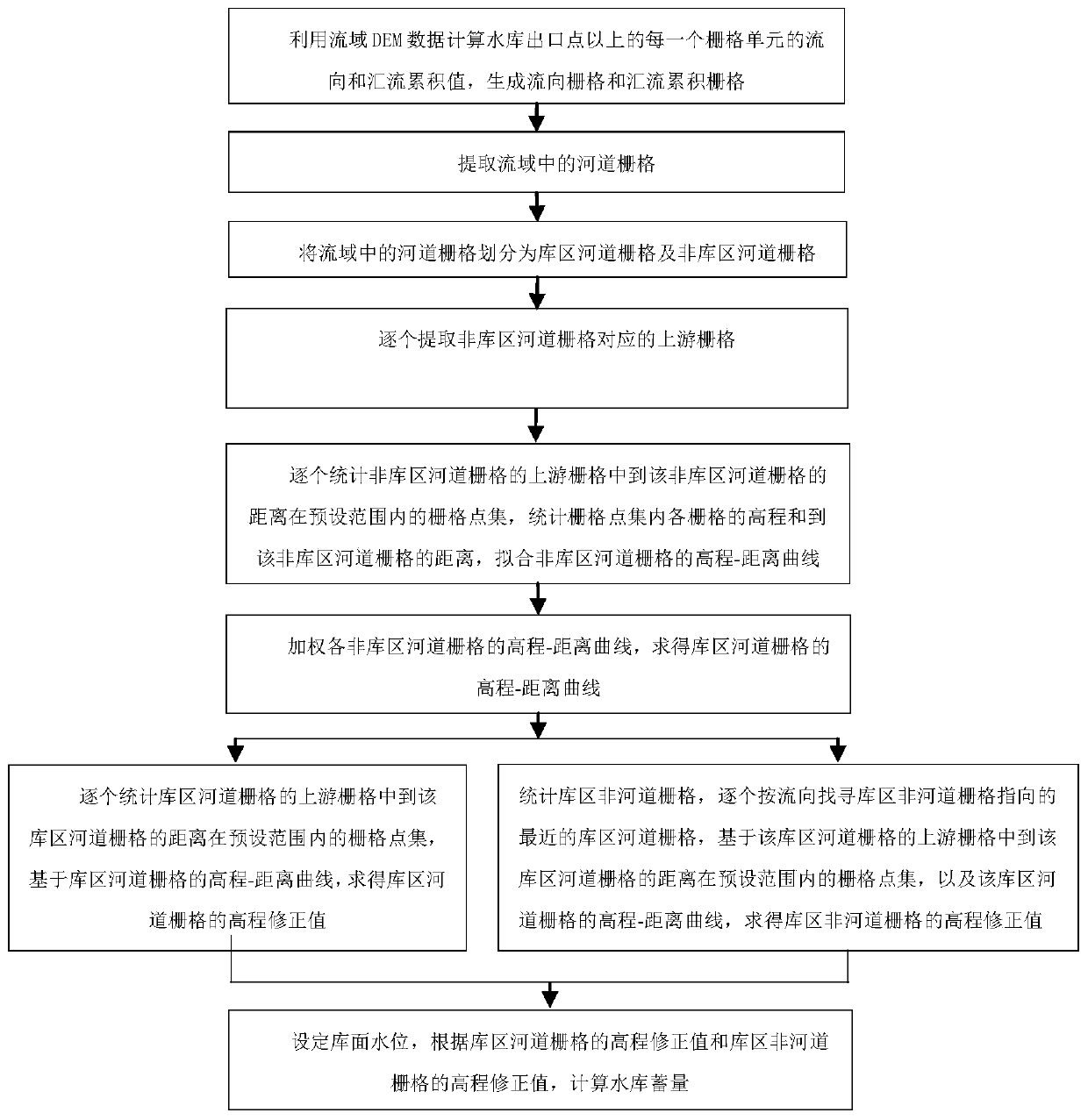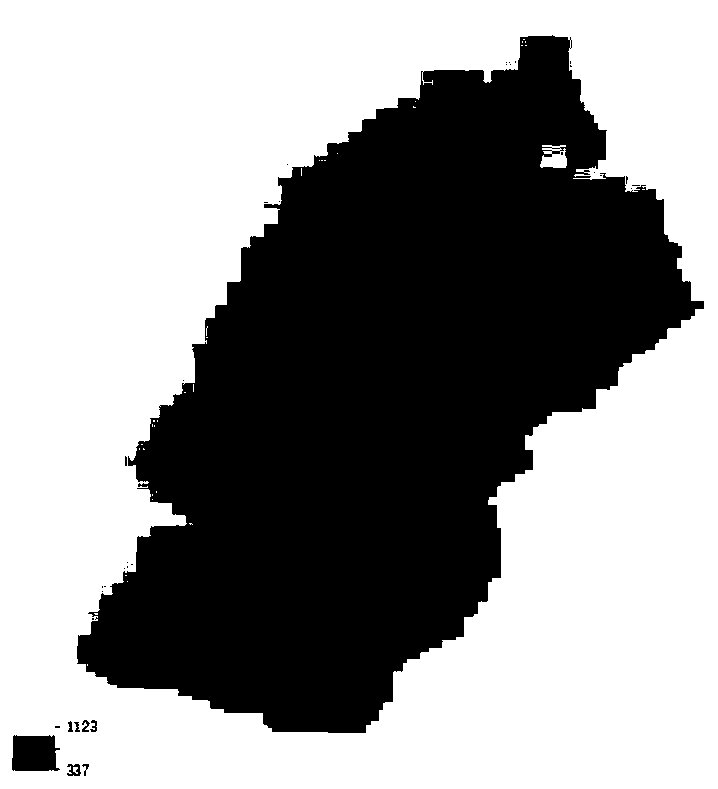Method for estimating storage capacity of small and medium-sized reservoirs in data-free area
A small and medium-sized technology without data, which is applied in computing, computer-aided design, image data processing, etc., and can solve problems such as low accuracy of terrain data, increasing the difficulty of flood forecasting and scheduling, and threatening the flood control safety of reservoirs and river basins.
- Summary
- Abstract
- Description
- Claims
- Application Information
AI Technical Summary
Problems solved by technology
Method used
Image
Examples
Embodiment Construction
[0074] In order to make the object, technical solution and advantages of the present invention clearer, the present invention will be described in detail below in conjunction with the accompanying drawings and specific embodiments.
[0075] Such as figure 1 Shown, a kind of method for estimating the storage capacity of small and medium-sized reservoirs in areas without data in the present invention comprises the following steps:
[0076] S1. Using watershed DEM data (such as figure 2 ) to calculate the flow direction of each grid cell above the outlet point of the reservoir (such as image 3 ) and cumulative values of confluence (such as Figure 4 ), to generate the flow direction grid and the cumulative flow grid, including the following steps:
[0077] 1), initialize the cumulative value of confluence of each grid cell in the watershed, and take the value as 1;
[0078] 2), with the grid unit Cell as the center, calculate the ratio of the elevation difference and the ...
PUM
 Login to View More
Login to View More Abstract
Description
Claims
Application Information
 Login to View More
Login to View More - R&D
- Intellectual Property
- Life Sciences
- Materials
- Tech Scout
- Unparalleled Data Quality
- Higher Quality Content
- 60% Fewer Hallucinations
Browse by: Latest US Patents, China's latest patents, Technical Efficacy Thesaurus, Application Domain, Technology Topic, Popular Technical Reports.
© 2025 PatSnap. All rights reserved.Legal|Privacy policy|Modern Slavery Act Transparency Statement|Sitemap|About US| Contact US: help@patsnap.com



